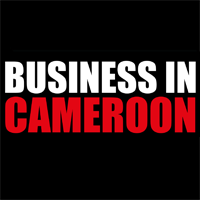
24 billion CFAF to build the bridge over Sanaga in Natchigal
It’s a real ordeal for the populations of Ntui, a rich agricultural locality situated in the Central region of Cameroon. To transport their farm products to the cities, they have to cross the Sanaga River by ferry. The same applies to the cattle, which are also transported by ferry or by boat. An average of CFAF 5,000 per head is paid to carry them across by boat. In addition, the ferry-boarding fee has to be paid and this contributes to increasing the price of foodstuffs, according to farmers.
Worse still, when the ferry breaks down, the food rots and patients die in villages because they have no means of being evacuated to Yaoundé, the capital. Cocoa producers are deducted 10 CFAF per kilogramme of cocoa sold to touts (buyers). This amount is said to cushion extra costs generated by the breakdown of the ferry, which lengthens transportation to Yaoundé. The same situation was experienced very recently in March 2012 when the populations of Ntui spent seven months without a ferry due to its breakdown. “7 months with no ferry on the Sanaga, a disaster for the Mbam and Kim economy”, was the title of an article wrote at that time by the paper ‘La Voix du Paysan’, which sounded the alarm.
When the ferry is operational, one boards it almost trembling with fear. In November 2010 for example, the ferry which connects Nachtigal village to the city of Ntui, with close to 200 passengers and seven vehicles on board diverted 10 km away from the landing point, near Ntui.
Fortunately, there were no human casualties.
Long wait
Actually, Ntui is linked to Yaoundé, the capital, by three exits. However, the shortest and most used exit goes via Obala. It covers about 80 km. Travelling through this exit, one has to necessarily cross River Sanaga by ferry. The river is situated 12 km from the city of Ntui. According to ‘La Voix du paysan’, it is also the shortcut for cattle transported from the ‘Grand Nord’ of Cameroon.
The populations have been expecting the construction of the bridge on this route for over three decades. Mr Ayissi introduced as head of Ehongo village near River Sanaga said he was disgusted to talk about this problem. A retired civil servant, he told ‘La voix du Paysan’ that he cannot go to Yaoundé with his car anymore because the trip will be too expensive. “When will there be a final solution to this problem? Is it forbidden to build us a bridge like that of Ebebda?” he wondered.
In response, officials of the Ministry of the Economy, Planning and Territorial Development say that the technical studies for the construction of the bridge over the Sanaga in Natchigal have been available since September 2010.
It involves building a 850 m bridge over River Sanaga in Natchigal which links the localities of Batchenga and Ntui. The overall cost of the project is estimated at CFAF 24 billion (€ 40 million).
Financing which still needs to be sought. It is a project which can be delivered within three years and the Cameroonian government would like the bridge to be operational in 2015. MC
Dong Song holds 280 MW
In Cameroon, the Sanaga River is the largest river with a catchment area of 14,000 km². It is on this river that the hydroelectric dam of Dong Song with a capacity of 280 MW is being earmarked.
According to Ernest Nnanga, an engineer and senior statistician at the agency in charge of giant projects in the Ministry of Economy, Planning and Regional Development, the objective of the project is to boost electrical energy and reduce its cost at the level of households and industries.
This is a project that will receive an additional supply of water from the Lom Pangar reservoir (the foundation stone was laid in August) as Dong Song is downstream of Lom Pangar which has a 6 billion m3 storage capacity of water. With its drop in height from 24 m, it is expected, according to Electricity Development Corporation (EDC), that Dong Song will have an additional 274 GW/h because of the water from Lom Pangar.
The project is estimated at CFAF 184.2 billion (€ 280 million). The funding is not yet available. Technical Studies are still in progress, but the duration of the project is estimated at 96 months.
JV
Mags frontpage
- Most read 7 days
- shared 1 month
- read 1 month




























